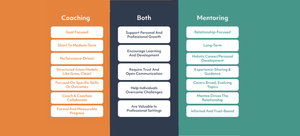4 Virtual Instructor Led Training Best Practices for Max Engagement

As technologies evolve and people become increasingly comfortable connecting virtually, companies are looking for ways to take their existing training content into the digital space. That’s where virtual instructor-led training (vILT) comes in. But what exactly is vILT, what are the benefits, what is its #1 challenge, and what virtual instructor led training best practices can you follow to maximize engagement?
Let’s take a look.
VILT Benefits
The benefits to business are obvious. By moving existing training content to online or app-based platforms, your company can:
- Connect learners globally,
- Reduce training costs, and
- Complement your blended learning strategy.
Plus, unlike self-paced e-courses, instructors can still interact with learners in real time, facilitating discussions and answering participant questions.
But let’s take a step back. What exactly does a vILT look like?
Three parts of a vILT
The three main components of a vILT are:
- The platform
- The training content
- The people
The platform
Two software platforms commonly used for vILT are the Cisco Webex Training Center and Adobe Connect. Both platforms create an online space where instructors and learners can interact and offer tools to increase engagement, including: virtual whiteboards, polling, “raise hand” and chat functions, and breakout rooms for smaller discussions and activities.
The content
Then you have your course materials which consist of the audio and visual content the instructor uses to teach the course, including: videos, text, audio clips, and images. Those materials are often contained in a PowerPoint presentation as a convenient way for instructors to organize and share information.
In addition, a facilitator’s guide outlining timing, talking points, discussion prompts, and activities can be very useful in keeping your session on track. Job aids, infographics, and other supplementary materials can be used as takeaways to reinforce learnings.
The people
You have your learners, of course, and your instructor/facilitator who is teaching the material and/or facilitating discussions and activities.
You may also want a producer—someone who is tech savvy and has in-depth knowledge of the platform you’re using to launch tools, move participants into breakout rooms and help monitor the time.
So, what is the biggest challenge with vILTs?
The big challenge
The greatest challenge with vILTs is also the greatest challenge with ILTs—keeping learners engaged. But with vILTs it is especially easy for participants to hide in the back of the virtual classroom where no one can see or hear them. Plus, instructors must compete with all the distractions at learners’ fingertips like email, texting, and Internet browsing.
Which leads us to…
Virtual Instructor Led Training Best Practices
Follow these 4 virtual instructor led training best practices to keep learners focused and engaged.
- Make your training part of a larger blended learning journey. One of the advantages of the vILT format is that learners can complete self-paced training and review materials before and after the live session. You don’t need to cram everything into marathon in-person sessions. Micro-learning has been proven to be 50% more engaging and makes the transfer of learning 17% more efficient. Break your content into smaller bite-sized pieces and focus your vILT on interactive discussions and activities
- Develop a set of rules and expectations up front. This may include asking participants to close email and browsers and refrain from using their phones. Let them know ahead of time how they are expected to communicate, for example chatting in questions or using the “raise hand” function.
- Make sure you utilize platform tools to their greatest advantage. For example, polls can be used as a quick and easy way to keep learners engaged while gathering valuable feedback. Breakout rooms are extremely useful with large groups to ensure everyone’s voice is heard. But don’t make the mistake of using tools just because they’re there. Make sure all aspects of your training are thoughtful and intentional. That’s because.
- No technology can replace an enthusiastic, engaging instructor who cares. Think back to school. What were your favorite classes? Most likely they were taught by teachers who kept the content entertaining and expressed a genuine interest in their students. The same goes for virtual classes. The best instructors use storytelling and compelling audio-visual content and, when possible, establish one-on-one relationships with their learners. This can be challenging with large groups, but whether it’s a quick phone call, email, or post on an intranet message board—try to find the time to connect with participants.
“vILTs really benefit from instructors and L&D departments who think outside the box and find ways to connect with participants outside of the live session.”
A vILT can be a great, cost-effective addition to your L&D department’s offerings. Participants love the convenience and business loves its low impact to the bottom line. And by following these vILT best practices, you can overcome its greatest challenge—learner engagement—to see positive, measurable results with your training.
To learn more about how to think strategically in this digital space and develop custom, design-forward, and engaging content, take a look at our custom vILT solutions and give us a shout! We’re happy to walk you through our process.
Get advice from an industry expert about the best practices
and potential pitfalls about transitioning to virtual training.


